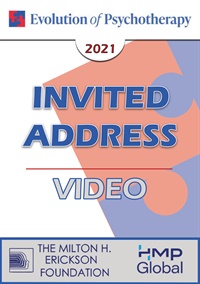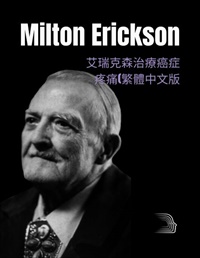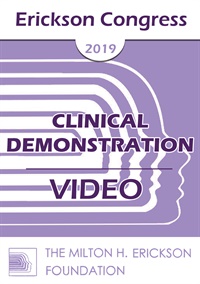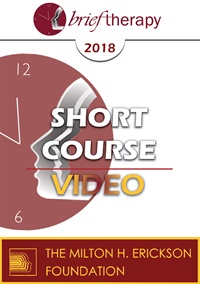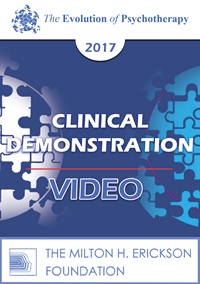- Average Rating:
- Not yet rated
- Topic Areas:
- Invited Addresses | Multicultural | Pain and Healing
- Categories:
- Evolution of Psychotherapy | Evolution of Psychotherapy 2021
- Faculty:
- Helen Neville
- Course Levels:
- Master Degree or Higher in Health-Related Field
- Duration:
- 1 hour
- Format:
- Audio and Video
- Original Program Date:
- Dec 03, 2021
- Short Description:
- In this presentation, Dr. Helen Neville will present the Psychology of Radical Healing framework. The heuristic is designed to describe the ways in which Black, Indigenous, and People of Color engage in individual and collective healing from identity based wounds. She will focus her discussion on the dimension of radical hope. After highlighting research findings, she will describe current interventions that promote specific aspects of radical healing. Specific practice recommendations will be offered.
- Price:
- $59.00 - Base Price
Tags: Multi-Cultural Pain & Healing
- Average Rating:
- Not yet rated
- Topic Areas:
- Pain and Healing | Milton Erickson | Ericksonian Hypnosis and Therapy Techniques | Hypnosis | Strategic Therapy | Utilization | Cancer
- Categories:
- Erickson Materials | Erickson Streaming Video Collection | Milton H. Erickson Collections
- Faculty:
- Milton H. Erickson, MD | Jeffrey Zeig, PhD
- Course Levels:
- Master Degree or Higher in Health-Related Field
- Duration:
- 1 hour
- Format:
- Audio and Video
- Original Program Date:
- May 07, 2020
- Short Description:
- This video features three separate cases, but all demonstrate Erickson’s fundamental method of utilization. Utilization is the foundation of solutions to all problems, and it is a philosophy of living which was central Erickson’s life and work as a therapist. He demonstrated that whatever existed in the situation, whatever the patient presented, could be utilized to advance the therapy.
- Price:
- $29.95 - Base Price
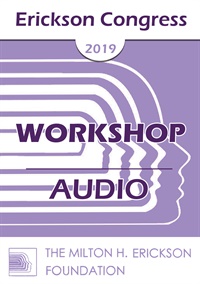
- Average Rating:
- Not yet rated
- Topic Areas:
- Workshops | Mind-Body | Trauma | Hypnosis | Healing | Resilience
- Categories:
- Erickson Congress | Erickson Congress 2019
- Faculty:
- Ronald Alexander, PhD
- Duration:
- 2 Hours
- Format:
- Audio Only
- Original Program Date:
- Dec 15, 2019
- Short Description:
- This workshop blends Ericksonian hypnosis, somatic experiencing and mindfulness to help clients move from traumatic overwhelm into regulated, resilient states. Participants learn practical tools like witnessing awareness, pendulation, grounding, breathwork, and gentle movement to calm the nervous system and reopen access to choice. Through demonstrations, stories and guided practices, the session shows how mind-body approaches can dissolve freeze states, release constriction, build internal resources and support lasting trauma recovery.
- Price:
- $15.00 - Base Price
- Average Rating:
- Not yet rated
- Topic Areas:
- Clinical Demonstrations | Mind-Body | Pain and Healing | Yes Set
- Categories:
- Erickson Congress | Erickson Congress 2019
- Faculty:
- Jeffrey Feldman, PhD
- Course Levels:
- Master Degree or Higher in Health-Related Field
- Duration:
- 58 Minutes
- Format:
- Audio and Video
- Original Program Date:
- Dec 15, 2019
- Short Description:
- Individuals are often referred for mind-body oriented pain management services concerned that the referring physician thinks that their pain is not real or that it is “all in my head”. The way in which such concerns are addressed and the relationship between mind and body is explained to patients will be demonstrated.
- Price:
-
Sale is $29.00
price reduced from Base Price - $59.00
Tags: Mind-Body Pain & Healing Yes Set
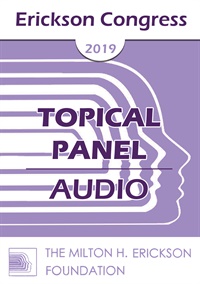
- Average Rating:
- Not yet rated
- Topic Areas:
- Topical Panels | Milton Erickson | Pain and Healing
- Categories:
- Erickson Congress | Erickson Congress 2019
- Faculty:
- Robert Dilts, BA | Eric Greenleaf, PhD | Richard Landis, PhD | Gunther Schmidt, MD, MA
- Duration:
- 57 Minutes
- Format:
- Audio Only
- Original Program Date:
- Dec 13, 2019
- Short Description:
- Milton Erickson contributed extensively to the health sciences, and many of his innovations have been researched empirically. Erickson was also the architect of the wounded healer used his disabilities to advance the lives of others.
- Price:
- $15.00 - Base Price
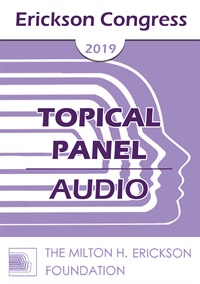
- Average Rating:
- Not yet rated
- Topic Areas:
- Topical Panels | Milton Erickson | Pain and Healing
- Categories:
- Erickson Congress | Erickson Congress 2019
- Faculty:
- Norma Barretta, PhD | Stephen Lankton, MSW | Marilia Baker, MSW | Jeffrey Zeig, PhD
- Duration:
- 57 Minutes
- Format:
- Audio Only
- Original Program Date:
- Dec 13, 2019
- Short Description:
- Milton Erickson contributed extensively to the health sciences, and many of his innovations have been researched empirically. Erickson was also the architect of the wounded healer used his disabilities to advance the lives of others.
- Price:
- $15.00 - Base Price
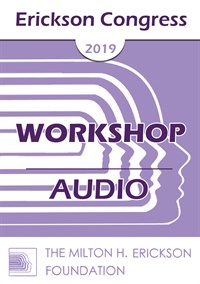
- Average Rating:
- Not yet rated
- Topic Areas:
- Workshops | Hypnosis | Pain and Healing | Resources
- Categories:
- Erickson Congress | Erickson Congress 2019
- Faculty:
- Robert McNeilly, MBBS
- Duration:
- 1 Hour 49 Minutes
- Format:
- Audio Only
- Original Program Date:
- Dec 13, 2019
- Short Description:
- Hypnosis is often regarded as complex and difficult. In this workshop we will build on Milton Erickson's concept of "The common everyday trance" to create an experience that is respectful of each client's individuality. We will explore what a client likes as a way of accessing their resources and 4 methods of connecting them with their resources so they can resolve their problem and heal. There will be a blend of lecture, demonstration and opportunities to practice this easy and effective approach.
- Price:
- $15.00 - Base Price
Tags: Hypnosis Pain & Healing Resources
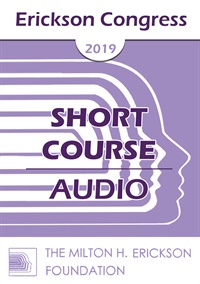
- Average Rating:
- Not yet rated
- Topic Areas:
- Short Courses | Brief Therapy | Pain and Healing
- Categories:
- Erickson Congress | Erickson Congress 2019
- Faculty:
- Timothy Hallbom, MSW | Kris Hallbom, BA
- Duration:
- 1 Hour 23 Minutes
- Format:
- Audio Only
- Original Program Date:
- Dec 12, 2019
- Short Description:
- Created by Tim and Kris Hallbom, Dynamic Spin Release is a powerful set of processes that allows users to quickly release their negative thought patterns and emotions, limiting beliefs and physical pain – in just one brief session. Dynamic Spin Release (DSR) was created using ideas delineated from the world famous psychiatrists, Carl Jung and Milton Erickson – and draws heavily from the psychology of metaphors, NLP, Ericksonian Hypnosis and creative visualization...
- Price:
- $15.00 - Base Price
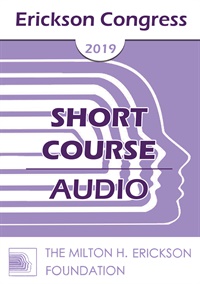
- Average Rating:
- Not yet rated
- Topic Areas:
- Short Courses | Ericksonian Hypnosis and Therapy Techniques | Pain and Healing | Research | Hypnosis
- Categories:
- Erickson Congress | Erickson Congress 2019
- Faculty:
- José Cava, Lic Psychologist
- Duration:
- 1 Hour 25 Minutes
- Format:
- Audio Only
- Original Program Date:
- Dec 12, 2019
- Short Description:
- Milton H. Erickson was a pioneer in understanding and managing chronic pain, even in his own life. He developed a variety of original and very effective hypnotic approaches to deal with pain. Acute pain is different from chronic pain, as recent research shows. The persistent of pain causes changes that permanently alter various areas in the brain and their communications. Chronic pain does not respond well to typical acute pain treatments and should be approached differently, with a more global and integrated approach.
- Price:
- $15.00 - Base Price
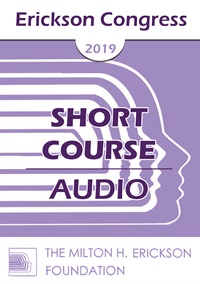
- Average Rating:
- Not yet rated
- Topic Areas:
- Short Courses | Pain and Healing | Sex and Sexuality | Multicultural | Psychotherapy
- Categories:
- Erickson Congress | Erickson Congress 2019
- Faculty:
- Mitra Rashidian, PhD | Robert Jaffe, PhD, LMFT
- Duration:
- 1 Hour 27 Minutes
- Format:
- Audio Only
- Original Program Date:
- Dec 12, 2019
- Short Description:
- According to research (Rashidian et al. 2015), Genito-Pelvic Pain/Penetration Disorder ‘Vaginismus’, causes significant sexual challenges for groups of sub-population women in the US. This workshop provides raw data and statistical analysis, supporting the hypothesis that these women experienced sexual pain as a manifestation of biopsychosocial conditions, resulting from cultural orientations. These include the cultural do’s and don’ts that shapes sub-population women’s sexual beliefs and attitudes, as a result of their life experiences within their cultures, impacting emotional and physical sexual experiences negatively.
- Price:
- $15.00 - Base Price
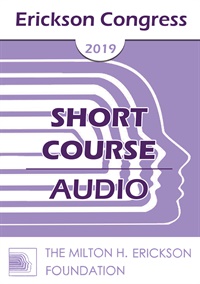
- Average Rating:
- Not yet rated
- Topic Areas:
- Short Courses | Metaphors | Storytelling | Ericksonian Hypnosis and Therapy Techniques | Pain and Healing
- Categories:
- Erickson Congress | Erickson Congress 2019
- Faculty:
- Marta Nowak-Kulpa, MA Psychologist
- Duration:
- 1 Hour 23 Minutes
- Format:
- Audio Only
- Original Program Date:
- Dec 12, 2019
- Short Description:
- This workshop will teach participants skills in using metaphors and stories to help patients experience a deep contact with themselves so that they can survive and even thrive following life-changing surgery. The material will focus on Ericksonian approaches that help patients heal, experience comfort, and restore body homeostasis. Clinical examples from patients undergoing transplantation – including face transplantation – will be presented. Face transplants are extremely complex and relatively rare. They usually require many months and even years of preparation.
- Price:
- $15.00 - Base Price
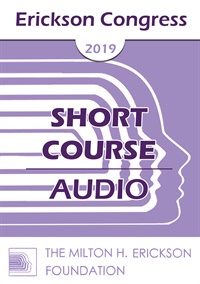
- Average Rating:
- Not yet rated
- Topic Areas:
- Short Courses | Pain and Healing | Therapeutic Relationship | Ericksonian Hypnosis and Therapy Techniques
- Categories:
- Erickson Congress | Erickson Congress 2019
- Faculty:
- Virgil Hayes, DO
- Duration:
- 1 Hour 27 Minutes
- Format:
- Audio Only
- Original Program Date:
- Dec 12, 2019
- Short Description:
- Chronic pain is frequently encountered by healthcare professionals. The current treatment is primarily pharmaceutical intervention with Opioids or NSAIDS that create new problems and address a limited part of the pain. Pain, whether physical or mental/emotional, tends to be experienced as one. Anticipated pain and memories of past painful incidents also contribute to the experience of pain.
- Price:
- $15.00 - Base Price
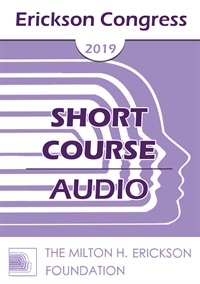
- Average Rating:
- Not yet rated
- Topic Areas:
- Short Courses | Pain and Healing | Tailoring | Trauma
- Categories:
- Erickson Congress | Erickson Congress 2019
- Faculty:
- James Keyes, PhD
- Duration:
- 1 Hour 32 Minutes
- Format:
- Audio Only
- Original Program Date:
- Dec 12, 2019
- Short Description:
- During this presentation, the development of chronic pain syndromes and some practical interventions will be discussed. Specifically, assessing patient's current functioning within a "whole-person approach" will allow clinicians better information about where to begin assisting with change. While using the "evidence-based treatments" as a starting point, finding ways to tailor the intervention to the individual will be reviewed. We will honor the long-history of hypnosis being used to treat chronic pain. Finally, we will review outcome research indicating what seems to make the most effect for patients with pain.
- Price:
- $15.00 - Base Price

- Average Rating:
- Not yet rated
- Topic Areas:
- Short Courses | Pain and Healing | Language of Hypnosis
- Categories:
- Erickson Congress | Erickson Congress 2019
- Faculty:
- Rachel Hott, PhD
- Duration:
- 1 Hour 7 Minutes
- Format:
- Audio Only
- Original Program Date:
- Dec 12, 2019
- Short Description:
- How often do we notice our pain, and not our comfort?! Most people only notice pain. When we pay attention to the "sensation," of pain we have a vocabulary that goes from A-Z to explain what we are feeling. For example, aching, biting, caustic, etc. However, when people think about the sensation of comfort, or attempt to describe how they are feeling without pain, they do not have descriptive language except for adjectives.
- Price:
- $15.00 - Base Price
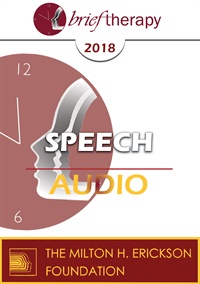
- Average Rating:
- Not yet rated
- Topic Areas:
- Speeches | Brief Therapy | Trauma | Anxiety | Hypnosis | Pain and Healing | Dissociation
- Categories:
- Brief Therapy Conference | Brief Therapy Conference 2018
- Faculty:
- Camillo Loriedo, MD, PhD
- Duration:
- 1:00:42
- Format:
- Audio Only
- Original Program Date:
- Dec 09, 2018
- Short Description:
- Dissociative hypnotic intervention demonstrated to be very useful in treating pain, anxiety disorders and many other conditions. But hypnosis can as well reactivate the natural mind processes, contributing to reconnect different parts (distinct modes of information processing) into a functional and unified self, particularly after traumatic experiences. Rapport, the special relationship that produces intense interpersonal links and connections, as well as profound disconnections with non-hypnotic reality, can be considered a crucial factor of brief therapeutic approach to dissociative conditions and trauma. How to use rapport as well as other new specific therapeutic interventions to reestablish the natural integrative links in a dissociative mind and relationship will be outlined in this presentation.
- Price:
- $15.00 - Base Price
Credit available - Click Here for more information
- Average Rating:
- Not yet rated
- Topic Areas:
- Short Courses | Brief Therapy | Belief Systems | Pain and Healing
- Categories:
- Brief Therapy Conference | Brief Therapy Conference 2018 | Online Continuing Education
- Faculty:
- Timothy Hallbom, MSW | Kris Hallbom, BA
- Course Levels:
- Master Degree or Higher in Health-Related Field
- Duration:
- 1:17:03
- Format:
- Audio and Video
- Original Program Date:
- Dec 06, 2018
- Short Description:
- Dynamic Spin Release™ is a powerful set of processes that allows users to quickly release their negative thought patterns and emotions, limiting beliefs and physical pain – in just one brief session.
- Price:
-
Sale is $29.00
price reduced from Base Price - $59.00
Credit available - Click Here for more information
- Average Rating:
- Not yet rated
- Topic Areas:
- Clinical Demonstrations | Psychotherapy | Meditation, Spirituality and Yoga | Pain and Healing
- Bundle(s):
- Learning Track - EP17 Psychotherapy Stream
- Categories:
- Evolution of Psychotherapy | Evolution of Psychotherapy 2017 | Evolution of Psychotherapy Psychotherapy Learning Track | Online Continuing Education
- Faculty:
- Scott Miller, PhD
- Course Levels:
- Master Degree or Higher in Health-Related Field
- Duration:
- 58:43
- Format:
- Audio and Video
- Original Program Date:
- Dec 15, 2017
- Short Description:
- The role of magick in physical and psychological healing is staging a comeback. Recently, the world’s two most populous countries have called upon folk healers, herbalists, and spiritual guides to address the pressing mental health needs of their citizenry. However the methods are believed to work—whether by the operation of spirits, the rebalancing of disharmonious energies, or other unknown powers—each approach shares a common denominator: the conviction that forces outside awareness, inaccessible to reason or direct observation, influence or even control life. Crucially, those viewed by the public as possessing the power to connect with such forces, are regarded as healers. It’s time for Western therapists to rediscover their magickal roots. This demonstration will identify and show possibilities for healing far beyond what the current and popular
- Price:
-
Sale is $29.00
price reduced from Base Price - $59.00
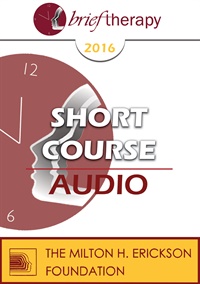
- Average Rating:
- Not yet rated
- Topic Areas:
- Short Courses | Anxiety | Pain and Healing | Brief Therapy | Panic
- Categories:
- Brief Therapy Conference | Brief Therapy Conference 2016
- Faculty:
- Patrick McCarthy, MBCHB
- Duration:
- 1:09:57
- Format:
- Audio Only
- Original Program Date:
- Dec 08, 2016
- Short Description:
- Anxiety and Panic can be cured by learning three simple skills namely a) rapid and profound relaxation b) rapid displacement and replacement of unwanted emotions, thoughts feelings and images and c) learning how to think like an optimist. Learn UltraBrief Therapy.
- Price:
- $15.00 - Base Price

- Average Rating:
- Not yet rated
- Topic Areas:
- Short Courses | Brief Therapy | Pain and Healing
- Categories:
- Brief Therapy Conference | Brief Therapy Conference 2016
- Faculty:
- James Keyes, PhD
- Duration:
- 1:15:19
- Format:
- Audio Only
- Original Program Date:
- Dec 08, 2016
- Short Description:
- Clinicians need to know basic approaches to assist patients with Chronic Pain who present for care. In this seminar, a conceptual overview will provide a framework for brief intervention, as well as then practicing specific experiential interventions to help patients improve coping and feel better.
- Price:
- $15.00 - Base Price
Tags: Pain & Healing Brief Therapy
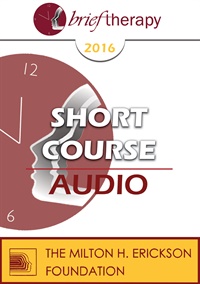
- Average Rating:
- Not yet rated
- Topic Areas:
- Short Courses | Art and Creativity | Brief Therapy | Music | Pain and Healing
- Categories:
- Brief Therapy Conference | Brief Therapy Conference 2016
- Faculty:
- Norma Barretta, PhD | Jolie Barretta
- Duration:
- 1:28:35
- Format:
- Audio Only
- Original Program Date:
- Dec 08, 2016
- Short Description:
- Using sound as an adjunct to psychological and medical intervention is a relatively new concept. This presentation gives a thorough experiential view of how sound, represented visually as well as auditorily, can influence the treatment in a positive way. Sound, and its frequencies, may indeed be a part of the medicine of the future.
- Price:
- $15.00 - Base Price
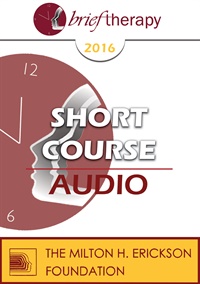
- Average Rating:
- Not yet rated
- Topic Areas:
- Short Courses | Pain and Healing | Meditation, Spirituality and Yoga
- Categories:
- Brief Therapy Conference | Brief Therapy Conference 2016
- Faculty:
- Teresa Robles, MA, PhD
- Duration:
- 1:28:20
- Format:
- Audio Only
- Original Program Date:
- Dec 08, 2016
- Short Description:
- In the same way that all the information about each person is in its DNA, the information of the Whole Universe is present in each one of its parts. I call that information our Universal Wisdom. Participants will learn to contact their Universal Wisdom and to utilize it for making their practice more efficient. Managing Chronic Pain is one of the biggest challenges for Health Professionals and their clients. Participants will learn a five steps exercise for managing Chronic Pain utilizing Universal Wisdom.
- Price:
- $15.00 - Base Price
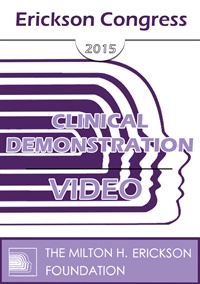
- Average Rating:
- Not yet rated
- Topic Areas:
- Clinical Demonstrations | Hypnosis | Trauma | Psychology | Pain and Healing | Energy Psychology | Ericksonian Hypnosis and Therapy Techniques
- Bundle(s):
- Learning Track - Using Hypnosis
- Categories:
- Erickson Congress | Erickson Congress 2015
- Faculty:
- Robert Schwarz, PsyD
- Course Levels:
- Master Degree or Higher in Health-Related Field
- Duration:
- 01:01:00
- Format:
- Audio and Video
- Original Program Date:
- Dec 12, 2015
- Short Description:
- Multilevel communication was important to Erickson. In this demonstration we will use “energetic communication”. Energy Psychology (EP) approaches will be integrated within an Ericksonian framework to treat a traumatic event; first focusing on neutralizing the negative affect of the trauma with EP and then increasing positive resources and connections with Ericksonian Hypnosis.
- Price:
-
Sale is $29.00
price reduced from Base Price - $59.00
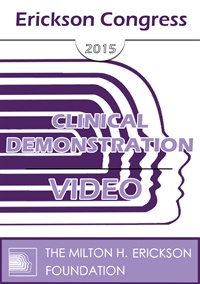
- Average Rating:
- Not yet rated
- Topic Areas:
- Clinical Demonstrations | Pain and Healing | Mind-Body | Polyvagal Theory
- Categories:
- Erickson Congress | Erickson Congress 2015
- Faculty:
- Maggie Phillips, PhD
- Course Levels:
- Master Degree or Higher in Health-Related Field
- Duration:
- 01:04:00
- Format:
- Audio and Video
- Original Program Date:
- Dec 10, 2015
- Short Description:
- This demonstration illustrates how clients can be taught to regulate persistent or chronic pain using simple strategies such as circular breathing, work with pendulum rhythms, voluntary and involuntary movement, and prosodic toning. Discussion will emphasize how these and other tools can activate or modulate specific aspects of polyvagal functioning to restore balance and bring relief.
- Price:
-
Sale is $29.00
price reduced from Base Price - $59.00
Tags: Mind-Body Pain & Healing Polyvagal
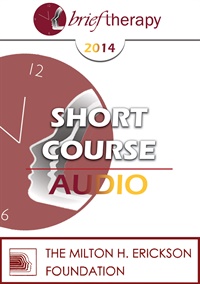
- Average Rating:
- Not yet rated
- Topic Areas:
- Anxiety | Depression | Trauma | Short Courses | Rational Emotive Behavior Therapy (REBT) | Pain and Healing | Brief Therapy
- Categories:
- Brief Therapy Conference | Brief Therapy Conference 2014
- Faculty:
- Debbie Joffe Ellis
- Duration:
- 1:31:16
- Format:
- Audio Only
- Original Program Date:
- Dec 11, 2014
- Short Description:
- Rational Emotive Behavior Therapy (REBT), the holistic approach considered to be the grandparent of cognitive approaches, created by the renowned and brilliant pioneer Albert Ellis PhD, is most effective as a brief therapy for lessening, transforming, healing and preventing emotional disturbances. This Short Course includes a live clinical demonstration, and present the main aspects, methods and techniques of this vigorous, bold and compassionate approach, and is presented by Debbie Joffe Ellis, wife of Albert Ellis.
- Price:
- $15.00 - Base Price
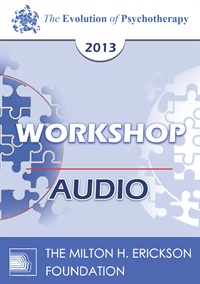
- Average Rating:
- Not yet rated
- Topic Areas:
- Workshops | Metaphors | Pain and Healing | Psychotherapy | Resources
- Categories:
- Evolution of Psychotherapy | Evolution of Psychotherapy 2013
- Faculty:
- Robert Dilts, BA
- Duration:
- 2 Hours
- Format:
- Audio Only
- Original Program Date:
- Dec 15, 2013
- Short Description:
- The late Gabrielle Roth, founder of the 5 Rhythms movement practice, was a quintessential woman of the body and sometimes called an “urban shaman.” Gregory Bateson was an iconic man of the mind and a foundational contributor to most modern methods of systemic therapy. Bateson and Roth interacted at Esalen in the legendary times during the late 1970s and Bateson encouraged Roth to bring her creation into the world. This workshop will explore the work of these two pioneers and how to integrate movement and mind to create generative resources for change and healing.
- Price:
- $15.00 - Base Price


